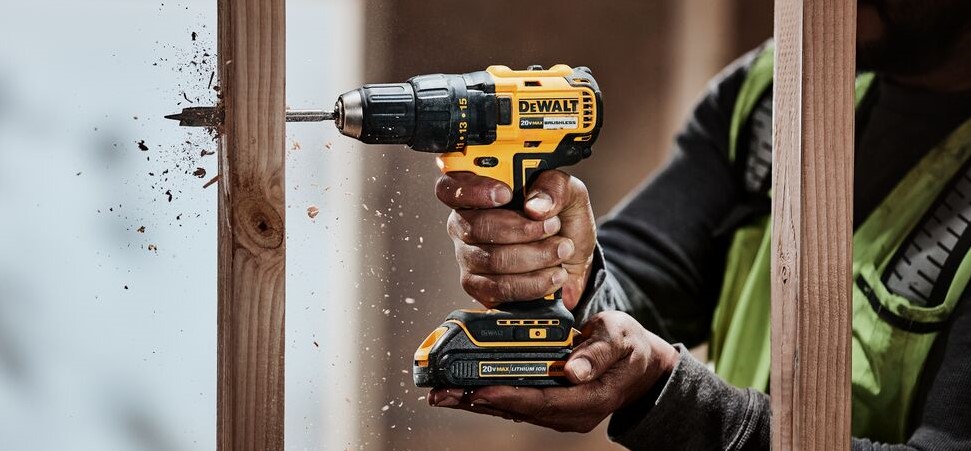Running out of battery on your drill can be frustrating, especially when you’re in the middle of a project. But what if you don’t have a charger handy? You might be surprised to learn that there are alternative methods to recharge your drill battery without the original charger.
Understanding Drill Batteries
Understanding drill batteries is essential for effective use and maintenance. Different types of batteries function uniquely, impacting performance and charging options.
Types of Drill Batteries
- Nickel-Cadmium (NiCd): Known for durability, NiCd batteries offer consistent power output. They can handle deep discharges and recharge quickly.
- Nickel-Metal Hydride (NiMH): NiMH batteries provide higher capacity than NiCd. They typically deliver longer run times but may suffer from memory effect issues.
- Lithium-Ion (Li-ion): Li-ion batteries are lightweight and offer high energy density. They feature less self-discharge and require minimal maintenance.
- Lead-Acid: Used in larger drills, lead-acid batteries are heavy but cost-effective. They require longer recharge times and regular maintenance.
Common Issues with Chargers
- Overheating: Chargers can overheat, affecting battery lifespan. Ensure proper ventilation during charging to prevent this.
- Connector Issues: Worn or damaged connectors may disrupt charging. Inspect connections for wear to maintain charging efficiency.
- Incompatibility: Using the wrong charger leads to improper voltage delivery. Always match the charger to the battery specifications.
- Faulty Chargers: A malfunctioning charger fails to deliver power. Regularly test chargers to ensure they operate correctly.
Alternative Methods to Charge a Drill Battery
You can explore various methods to charge a drill battery without the original charger. These techniques utilize different power sources and equipment effectively.
Using a Benevolent Power Source
Using a power source from another device can prove beneficial. You can adapt a 12V power adapter or a similar power supply. Follow these steps:
- Identify the Voltage: Check your drill battery’s voltage rating to ensure compatibility.
- Connect Wires: Utilize compatible connectors and carefully connect the positive and negative terminals to the power source.
- Monitor the Charging Process: Regularly check the battery for excessive heat. Disconnect immediately if it becomes hot, ensuring safety.
This method requires caution, so double-check connections and voltage ratings.
Employing a Car Battery
A car battery serves as a handy alternative for charging your drill battery. To accomplish this safely, follow these steps:
- Get the Right Cables: Use jump leads or heavy-duty wires with appropriate connectors.
- Connect the Drill Battery: Attach the positive lead to the positive terminal of the drill battery, followed by the negative lead to the negative terminal.
- Connect to the Car Battery: Attach the other ends to the car battery, ensuring secure connections.
- Charge Carefully: Keep the connection for about 10 to 20 minutes and monitor the drill battery closely to prevent overheating.
This method works best with compatible battery types and maintains adequate safety practices throughout the process.
Safety Precautions
Prioritizing safety when charging a drill battery without a charger is crucial. You’ll reduce risks of injury and equipment damage by following essential precautions.
Avoiding Short Circuits
Ensure secure connections between your power source and the battery. Inspect cables for frays or damage. Use a multimeter to verify voltage compatibility before proceeding. Avoid touching exposed wires, and ensure the battery is in a dry area during charging. Disconnect the battery immediately if you notice any unusual heat or sparks.
Protecting Yourself and Your Equipment
Wear protective gear such as safety goggles and gloves to safeguard against potential hazards. Charge the battery in a well-ventilated space. Keep flammable materials away from the charging area. Monitor the charging process consistently to prevent overheating, and refrain from leaving the battery unattended.
Best Practices for Charging
Following best practices enhances safety and efficiency when charging a drill battery without a charger. Focus on maintaining secure connections and closely monitoring charging levels.
Ensuring Proper Connections
Ensure tight connections between the battery and the power source, preventing arcing or short circuits. Use alligator clips or jumper wires with insulated handles for safe connections. Check that the positive terminal connects to the positive cable and negative to negative. Avoid bare wires or frayed cables to maintain safety. Verify the voltage of the power source to match the battery voltage, preventing damage. If possible, incorporate a fuse in the circuit to protect against excessive current.
Monitoring Battery Levels
Monitor battery levels throughout the charging process to prevent overcharging. Use a multimeter to check voltage periodically, especially if you’re using a makeshift charging method. Aim for a charging time between 2 to 6 hours, depending on battery type and method used. Look for signs of overheating, such as increased temperature or swelling. If the battery exhibits these signs, disconnect it immediately. Regularly checking battery tolerance safeguards against damage and extends battery lifespan.
Conclusion
Charging your drill battery without a charger can be a lifesaver when you’re in the middle of a project. By understanding your battery type and following the right methods, you can keep your tools powered up and ready to go.
Always prioritize safety by ensuring secure connections and monitoring the charging process. With the right precautions and techniques, you can effectively recharge your drill battery and avoid unnecessary interruptions.
Whether you’re using a 12V power adapter or a car battery, these alternative methods offer practical solutions that can extend the life of your battery and enhance your overall experience. Stay prepared and keep your projects moving forward.

Hi, I’m Md Rofiqul, a gardening enthusiast who loves spending time in the garden and backyard. I enjoy caring for plants, growing flowers and vegetables, and creating a green space that feels peaceful and refreshing. Gardening is more than just a hobby, it’s a passion that connects me to nature and brings joy to my daily life. Living with plants inspires me to embrace simplicity, patience, and sustainability while making every day more colorful and rewarding.
